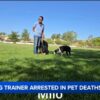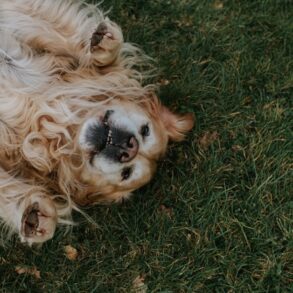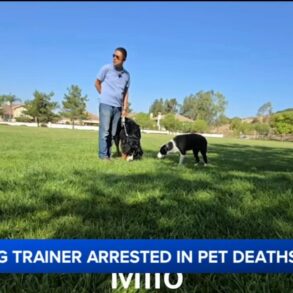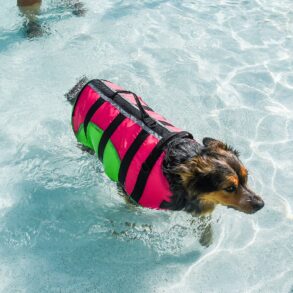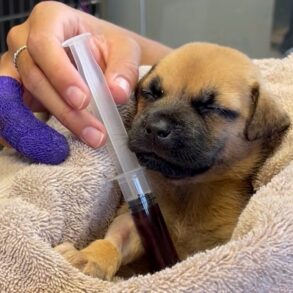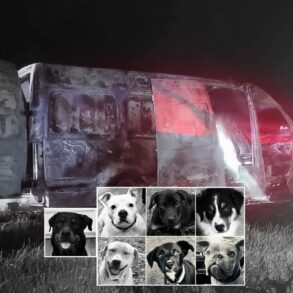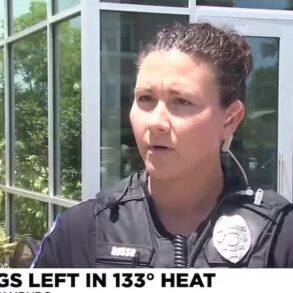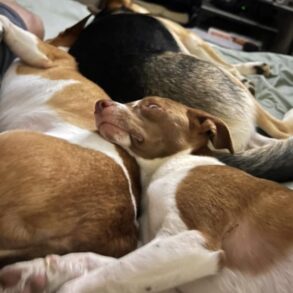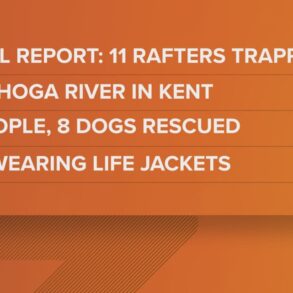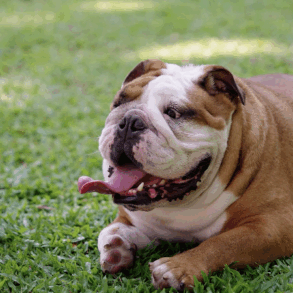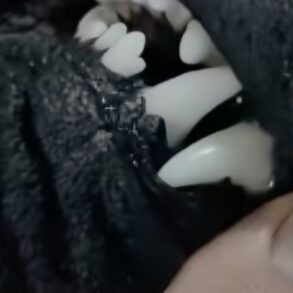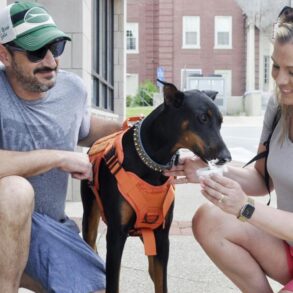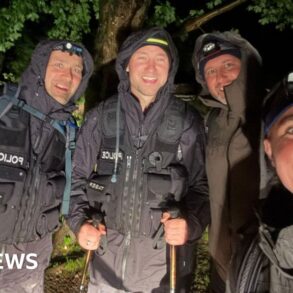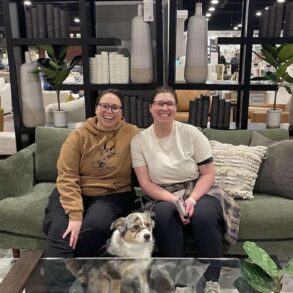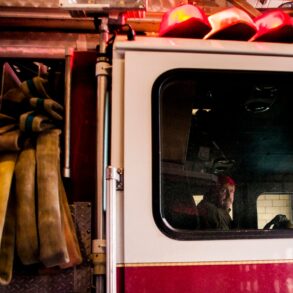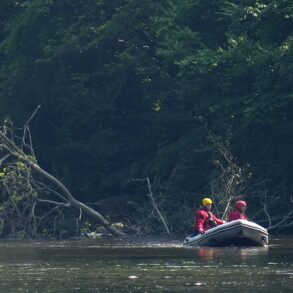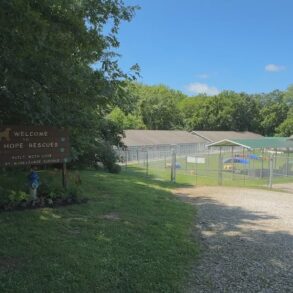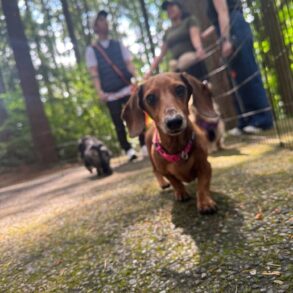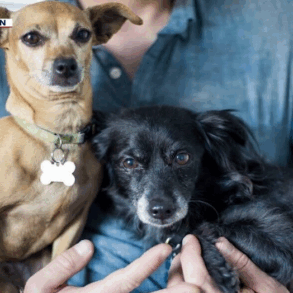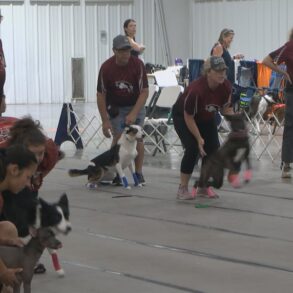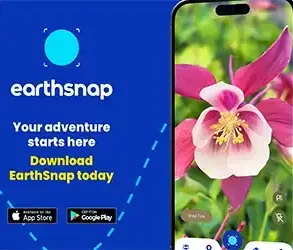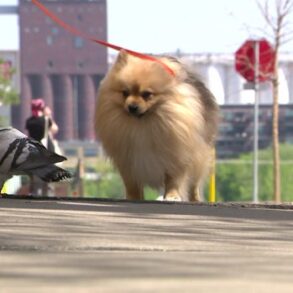Kayla gives her presentation while Barley lies down.
Oregon State University PhD student and founder of K9 Conservationists, Kayla Fratt, gave a presentation at California Lutheran University’s Gilbert Events Center on the history and future of conservation detection dogs on Monday night. Kayla was accompanied by one of her conservation detection dogs, Barley, who provided a demonstration of her research.
The College of Arts and Sciences and the Office of Research hosted the presentation as part of their “Student Research” series.
“I saw Kayla on a National Geographic show and I just thought the work that she does with her dogs is so amazing for conservation efforts and a great way to bring science in and give back to the community,” Director of Research Development and Support Andrea Sell said.
Fratt grew up in Wisconsin and said she developed a love for animals when she trained pigeons at a young age.
As a college student, Fratt said she realized she needed money, so she began walking dogs for money and thought teaching the dogs some tricks would be fun. While pursuing a degree in ecology from Colorado College, Fratt said training dogs became a passion for her.
“Briefly, I had a background in dog training and ecology, and I heard about this line of work and I spent a bunch of time grant writing and applying to jobs and gaining diverse experiences before joining the world of conservation protection dogs,” Fratt said.
During her presentation, Fratt shared research that she and her team recently collected. Fratt said her team taught their dogs to detect scat from Alexander Archipelago wolves using their sense of smell. According to Fratt, the training period begins when the dog is a puppy and goes well into their teenage years.
Fratt also said that due to their sense of smell and speed, dogs are traditionally viewed as “better” at finding scat than humans. Scat is used as the basis for much animal research, according to Fratt. For her and her team, Fratt said wolf scat can be used to determine if the Alexander Archipelago wolf is going extinct.
“I am trying to look at the efficacy of the scat detection dogs and whether or not they are not necessarily finding more scat than humans, but if they are finding more scat than humans that would change the results,” Fratt said. “I am also really interested in the question of what causes the wolves to eat more sea otters or more marine animals and is that more about the relationships between the wolves themselves and them teaching each other, or is it more about the biogeography of the area itself.”
Not only does Fratt enjoy sharing her research, but she said she also loves getting other young scientists into the conservation field.
“The more I get to talk about it with young scientists, the more helpful it is for not just us as an organization, but just kind of the field in general and science even broader than that,” Fratt said.
Fratt said when she was first looking for a job, she emailed every conservation organization and only received negative responses. Eventually, she got a job; but said she lost it amid layoffs caused by the COVID-19 pandemic. Fratt said this ultimately led to the creation of K9 Conservationists.
Fratt said she has made it her goal to create a clear pathway for scientists to become conservationists. She started a podcast and created a Patreon, and said she also created an online handlers course, which allows shadowing and hires interns regularly.
Anna DiPietrantonio, a current student at Cal Lutheran majoring in environmental science with two minors in biology and economics, touched on how important conservation work is.
“It broadens our perspective of tools we can use and also remembering humans are a part of nature, and so are dogs, and that they are helpful for protecting and conserving the environment,” DiPietrantonio said.
Fratt also said there is a lot of “gatekeeping” in the world of conservation dogs and said, there is not enough work within the field and the pay is not very good. This creates a lot of possessiveness with clients and with knowledge, Fratt said. Due to this, Fratt said it is hard to get into the line of work.
Following her presentation, Fratt and Barley demonstrated their work. Fratt asked a volunteer to hide a bag of scat in the room while she took Barley out to change. Barley came back and found the scat with ease. As the dog got closer to the scat his tail started wagging faster until he found it.
“I have the coolest job in the world and I love getting to talk about it,” Fratt said. “I’m also just really proud of the work that we get to do with the dogs, and I really care about bringing the concept of detection dogs being helpful for conservation to more people, because they just do not know about it yet.”
This post was originally published on this site be sure to check out more of their content.



